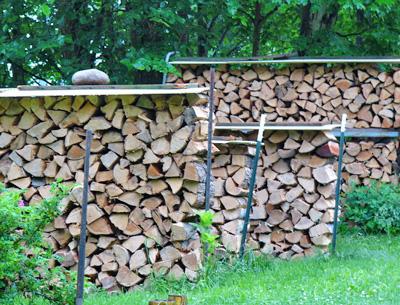Enhancing the Sustainability of Community-based Biomass Production and Use for Local Energy through University-Community Partnerships

High energy costs and environmental concerns have prompted communities in the Northern Forest to explore options for producing energy from local forests. Both homeowners and public facilities are interested in wood as a source of low carbon and locally accessible energy. In Vermont alone, 45 schools heat with wood. While foresters and ecologists have developed harvest guidelines, communities still struggle to sort out the technical, economic, and social aspects of sustainable energy.
NSRC researchers worked in communities in two counties of Vermont. In Addison County, researchers focused on a community-supported firewood program and in Washington County, on a forest sustainability partnership between the University of Vermont and wood-heated Harwood Union Middle and High Schools to produce a management plan for the school forest and provide students with field instruction and teachers with educational workshops. Researchers conducted a wood demand survey of residents, a supply survey of forest landowners, a GIS (geographic information systems) study of potential supply, a procurement study of the schools, and interviewed loggers to understand supply and delivery issues.
Findings revealed much community interest in expanding use of wood energy. Communities appreciated technical information and other decision supports that address their particular concerns. Once sustainability “screens” were considered, however, there was less wood available locally for biomass energy than residents anticipated. Likewise, the ability to support local businesses by sourcing wood locally met constraints related to cost, scale, and technology. Nonetheless, community members were eager to engage in educational and cooperative approaches to sustaining local forests while pursuing energy alternatives. For more resources, visit http://www.uvm.edu/forestcarbon/biomass.
